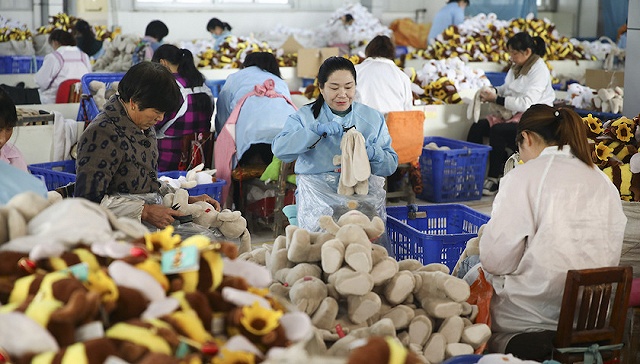China's emerging industries Vietnam lights up the new direction of ASEAN exports
Vietnam to undertake China's export decline industry, want to combine with China's emerging industries, for the new direction of ASEAN exports to point the way, promote industrial upgrading。
In the wake of the neo-crown epidemic, there is greater concern about supply chain independence and security。
It is reported that after 2015, China's upward momentum in world trade began to slow, and in the following three years, China's share of global exports gradually declined while overall trade slowed.。However, China's export share soared in 2020 as China's resilient supply chain performed better than other countries in 2019 during the New Crown epidemic。

China's downward trend resumed last year, but the loss of global market share was concentrated in labor-intensive industries, which account for about 26% of China's total exports.。
Among them, the global market share of China's textile and footwear industry increased from 39 in 2015.3% down to 29% in 2022。EU countries and a range of ASEAN countries have taken market share from these industries from China.。
At the national level, Vietnam appears to have reaped the greatest absolute gains from the repositioning of global export markets, especially relative to the size of its smaller exports and economy.。
Unlike textiles and footwear, most Chinese industries are still gradually expanding their global market share, especially in high-skilled, technology-intensive industries.。In these new industries, including mechanical and electrical products, China's share has increased from 17% in 2015..9% to 28 last year.5%。
On the other hand, the market share of many EU and ASEAN countries in these areas is shrinking.。However, Vietnam was the exception, with its market share rising slightly in tandem with China.。Despite the loss of market share, EU and ASEAN exports of such products continued to grow significantly, thanks to the overall expansion of the world market for such goods.。
China's loss of global market share in labor-intensive industries reflects the natural evolution of the economy。From the perspective of policies to promote industrial upgrading and transfer, the transfer to high value-added and technology-intensive industries is in line with China's economic development strategy and policy direction。
As a result, China has accumulated capital, skilled labor and technology, and realized the transformation to advanced industries.。This transition has not only had a positive impact on China's domestic economic growth, but also had spillover effects on countries in other regions.。

Among ASEAN members, Vietnam has so far been the main beneficiary。In addition to capturing most of the market share of China's declining export industries, Vietnam also maintains good ties with China's emerging industries.。
An industry analysis shows that the economies of Vietnam and China are similar in terms of manufacturing structure。As a result, Vietnam has the potential to continue its efforts to replace exports from Chinese industries that have been sluggish due to rising tariffs and other trade barriers.。
However, Vietnam is still in the early stages of accumulating the necessary capabilities and resources to support China's progress in innovative high technology.。Optimistically, China is gradually increasing its investment in Vietnam, while shifting to advanced industries such as electronics, semiconductors and batteries.。
However, as Vietnam continues to integrate its production with China, its growing export industry will be more vulnerable to external shocks.。Therefore, Vietnam must strengthen supply chain resilience to prevent potential disruptions.。
ASEAN exports to China's expanding industries are increasing, but market share gains are limited。Given the region's deep economic ties with China, ASEAN may have enough potential to benefit from a shift in the global trade landscape。
In order to better realize the potential of the region, ASEAN governments should consider implementing supportive policies - cultivating new industries, driving future export growth, and training workers in skills to complement China's industrial development.。At the same time, diversification of export markets will also enhance ASEAN's economic resilience.。
Policies such as "promoting research and development," "supporting high-tech start-ups" and "providing vocational training" will benefit the rise and development of emerging industries in ASEAN economies.。This, in turn, will help integrate into the evolving supply chain, especially at a time when China is undergoing industrial upgrading.。
Ultimately, ASEAN economies need to strike a balance between "relying on China-centric trade" and "expanding the network of trading partners."。Supply chain resilience can also be enhanced through diversification of export markets and import sources。
·Original
Disclaimer: The views in this article are from the original Creator and do not represent the views or position of Hawk Insight. The content of the article is for reference, communication and learning only, and does not constitute investment advice. If it involves copyright issues, please contact us for deletion.